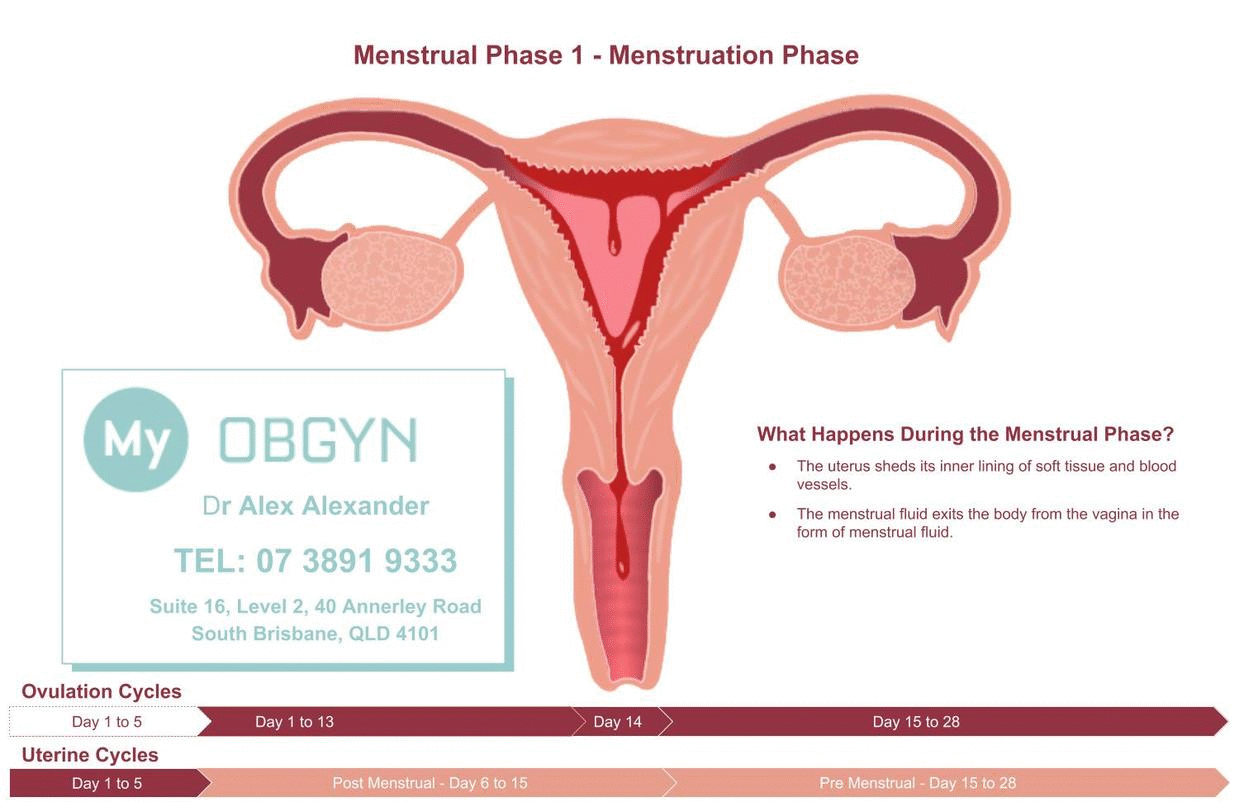Phases of Menstruation
1. Menstruation Phase
The uterus sheds its inner lining of soft tissue and blood vessels. The menstrual fluid exits the body from the vagina in the form of menstrual fluid.
2. Follicular Phase
The pituitary gland secretes a hormone that stimulates the egg cells in the ovaries to grow. One of these eggs cells begins to mature in a sac-like structure called follicle. It takes 13 days for the egg cell to reach maturity. While the egg cell matures, its follicle secretes a hormone that stimulates the uterus to develop a lining of blood vessels and soft tissue called endometrium.
3. Ovulation Phase
The pituitary gland secretes a hormone that causes the ovary to release the mature egg cell. The egg cell is swept into the fallopian tube by the slender hair-like projections (cilia) on each fimbriae. Fimbriae are finger-like projections located at the end of the fallopian tube close to the ovaries.
4. Luteal Phase
The egg cell released during the ovulation phase, stays in the fallopian tube for 24 hours. If a sperm cell does not impregnate the egg cell within that time, the egg cell disintegrates. The hormone that causes the uterus to retain its endometrium gets used up by the end of the menstrual cycle. This causes the menstrual phase of the next cycle to begin.


